This article needs additional citations for verification .(November 2024) |
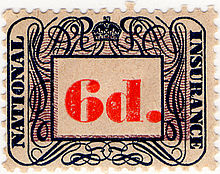
The Contributions Agency Collection is a collection of British National Insurance stamps that forms part of the British Library Philatelic Collections. [1]
This article needs additional citations for verification .(November 2024) |

The Contributions Agency Collection is a collection of British National Insurance stamps that forms part of the British Library Philatelic Collections. [1]

National Insurance (NI) is a fundamental component of the welfare state in the United Kingdom. It acts as a form of social security, since payment of NI contributions establishes entitlement to certain state benefits for workers and their families.

India Post is an Indian public sector postal system statutory body headquartered in New Delhi, India. It's trade name of the Department of Post under the Ministry of Communications. Generally known as the Post Office, it is the most widely distributed postal system in the world, and India is the country that has the largest number of post offices in the world. It is involved in delivering mail (post), remitting money by money orders, accepting deposits under Small Savings Schemes, providing life insurance coverage under Postal Life Insurance (PLI) and Rural Postal Life Insurance (RPLI) and providing retail services like bill collection, sale of forms, etc.

A revenue stamp, tax stamp, duty stamp or fiscal stamp is a (usually) adhesive label used to designate collected taxes or fees on documents, tobacco, alcoholic drinks, drugs and medicines, playing cards, hunting licenses, firearm registration, and many other things. Typically, businesses purchase the stamps from the government, and attach them to taxed items as part of putting the items on sale, or in the case of documents, as part of filling out the form.

The British Library Philatelic Collections is the national philatelic collection of the United Kingdom with over 8 million items from around the world. It was established in 1891 as part of the British Museum Library, later to become the British Library, with the collection of Thomas Tapling. In addition to bequests and continuing donations, the library received consistent deposits by the Crown Agency and has become a primary research collection for British Empire and international history. The collections contain a wide range of artefacts in addition to postage stamps, from newspaper stamps to a press used to print the first British postage stamps.

The Crown Agents Philatelic and Security Printing Archive was deposited with the British Museum from the 1960s, though the first recorded deposit from the Crown Agents was in 1900. The archive consists of a range of philatelic and written material which were the Crown Agents' working records. It is the most comprehensive record of British Colonial and Commonwealth stamp issues of the last 100 years.
The Board of Inland Revenue Stamping Department Archive in the British Library contains artefacts from 1710 onwards, and has come into existence through amendments in United Kingdom legislation.
The Davies Collection is a collection of Libyan revenue stamps from 1955 to 1969, formed from material from the Bradbury Wilkinson Archive, and presented to the British Library Philatelic Collections by John Neville Davies in 1992.
The H.M. Customs and Excise Collection is a collection of British revenue stamps in proof or registration form for Table Water Duty, Medicine Tax, Playing Card Tax and other duties. It forms part of the British Library Philatelic Collections and was transferred to the Library by H.M. Customs & Excise in 2002.
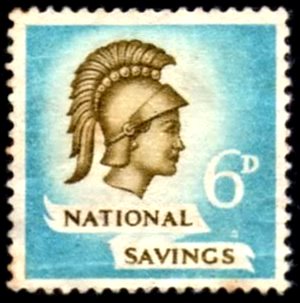
The H.M. Stationery Office Collection is a collection of British excise revenue material including National Savings and National Insurance stamps that forms part of the British Library Philatelic Collections. It was received from H.M.S.O. between 1982 and 1992.
The Turner Collection of Newspaper Tax Stamps is a collection of newspaper tax stamps of the United Kingdom and of the 1694 6d revenue tax stamps that forms part of the British Library Philatelic Collections. It was formed by S.R. Turner and donated in 1973.
The Ryan Collection is a collection of municipal revenue stamps of Budapest from 1898 to 1947 formed by Gary Ryan. It forms part of the British Library Philatelic Collections and was donated to the Library in 2001.
The Booth Papers are a collection of philatelic research documents of Roger Booth FRPSL used for the preparation of his catalogues of British and Irish revenue stamps. The papers form part of the British Library Philatelic Department Collections and were donated to the Library in 2004.
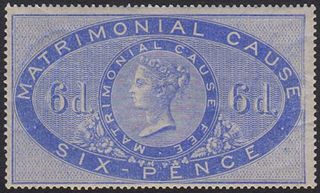
Revenue stamps of the United Kingdom refer to the various revenue or fiscal stamps, whether adhesive, directly embossed or otherwise, which were issued by and used in the Kingdom of England, the Kingdom of Great Britain, the United Kingdom of Great Britain and Ireland and the United Kingdom of Great Britain and Northern Ireland, from the late 17th century to the present day.
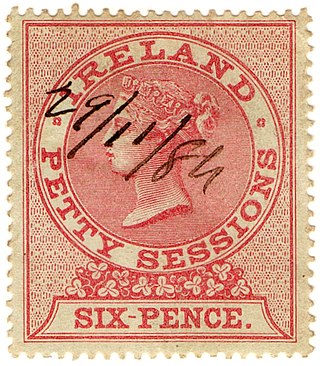
Revenue stamps of Ireland refer to the various revenue or fiscal stamps, whether adhesive, directly embossed or otherwise, which have been used on the island of Ireland since 1774. These include issues by the Kingdom of Ireland, issues by the United Kingdom specifically for use in Ireland or briefly Southern Ireland, and issues of an independent southern Ireland since 1922. Revenue stamps of Northern Ireland were also issued from 1921 to the 1980s, but they are not covered in this article.

The British colony of Bermuda issued revenue stamps from 1936 to 1984.
Bangladesh first issued revenue stamps in 1972, the year after independence, and continues to do so to this day. Previously there was no country named Bangladesh and it was part of India and part of Pakistan and respective revenues were used. From 1921 to 1947 various Indian revenues were overprinted BENGAL for use in modern Bangladesh and West Bengal.

Kenya, formerly known as British East Africa issued revenue stamps since 1891. There were numerous types of revenue stamps for a variety of taxes and fees. Also valid for fiscal use in Kenya were postage stamps issued by the following entities:
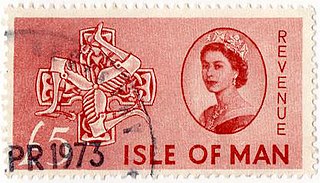
Revenue stamps of the Isle of Man refer to the adhesive revenue or fiscal stamps which were issued by the British Crown dependency of the Isle of Man between 1889 and 1976. British key type revenue stamps with an appropriate inscription were issued on the island until 1966, when revenue stamps showing various scenes and symbols of the island began to be issued. The last set of stamps was issued in 1976. From around 1920 to the 1970s, hundreds of contribution stamps were issued for National Insurance and related schemes.

Revenue stamps of Northern Ireland refer to the various revenue or fiscal stamps, whether adhesive, directly embossed or otherwise, which were issued by and used in Northern Ireland, a constituent country of the United Kingdom. From 1774, various revenue stamps of Ireland were used throughout both Northern and Southern Ireland, while revenue stamps of the United Kingdom were also used to pay for some taxes and fees.
Revenue stamps of Guernsey refer to the various revenue or fiscal stamps, whether adhesive or directly embossed, which were issued by the States of Guernsey for use on the island of Guernsey, a British Crown dependency. There were general-duty revenues, along with issues for Entertainments Tax, Sales Tax, Income Tax and Insurance.